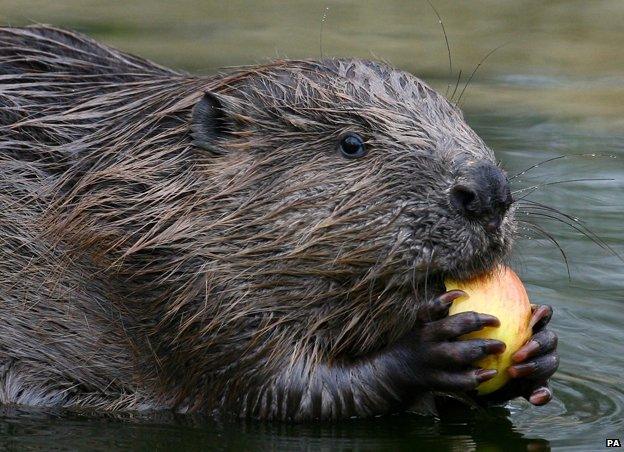Who, What, Why: Do beavers prevent flooding?
- Published

After heavy flooding across southern England, there are calls for beavers to be reintroduced. Would they help, asks Tom de Castella.
You might assume beavers cause floods. They build dams to create waterlogged habitats. But some supporters say they can actually prevent flooding by keeping more water in uplands, away from people. "Beavers build dams and they complicate and slow down water," Louise Ramsay, from the Scottish Wild Beaver Group, told the BBC. "They braid the streams [creating a network of small channels] and they will block ditches."
There is still flooding but the ideal is for it to happen upstream in upland areas where less harm will be done. "You'll have lots of little pools. You've got the water coming more slowly down from the uplands into the low ground."
Beavers are "nature's water manager", says Derek Gow, a farmer and ecologist in Devon who has created his own wetland enclosure with about 25 of the creatures. Studies suggest that a wetland area can hold up to 40 times as much water when beavers are present, he says. "They reinstall the sponges" to the landscape, he argues. Instead of water cascading down to the river valleys, it is only gradually released. Modern land management - draining uplands and bogs, cutting down trees and straightening rivers - has exacerbated flood risk, says Springwatch presenter Chris Packham. The lack of beavers is another element.
Wild beavers exist in Scotland but there are none in England. Or nearly none. Some say reintroduction across the whole of the UK is too risky. Many landowners, foresters and fishermen fear damage to fish stocks and woodland. There are potential downsides, too. A house in Washington state in 2012 was reported to have been hit by a "wall of water", external after a dam created by beavers broke. The return of the beaver in Estonia has proved controversial, external.
But all this is manageable, say supporters, if you put them in the right place. Beavers wouldn't work everywhere. The Somerset Levels has a manmade "pumping regime" and beavers would burrow into flood walls and stream banks. But in wilder parts of Britain, such as the River Camel in Cornwall or the Kielder Forest in Northumberland they would work well, says Gow.
Follow @BBCNewsMagazine, external on Twitter and on Facebook, external